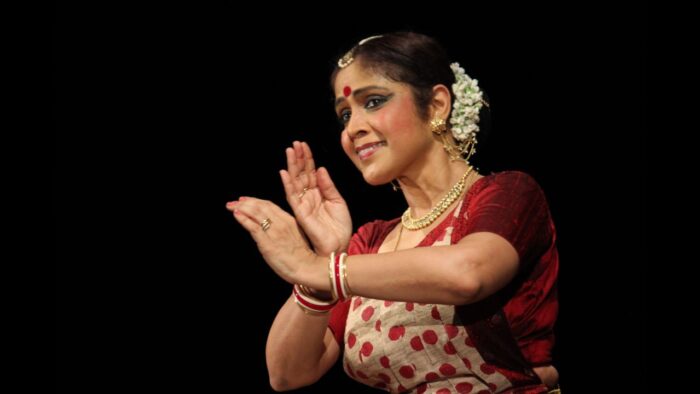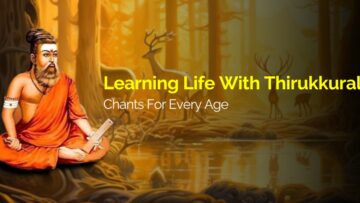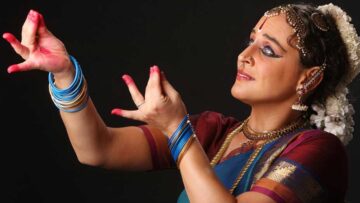The pandemic will perhaps go down in history as the year when adults bent backwards to create stories for children, in order to wipe from their young minds the horror unfolding before the world. Artists struck by their own helplessness in expressing their art, found novel ways to navigate an unprecedented pause to creative life. It is often believed that great children’s books and art are “existential philosophy in disguise”, often a comfort to the eternal child in us. But this is a story of when children took the lead in telling stories from our ithihasas, Purnas, folk tales, musical and dance traditions.
Dancer and guru Ananda Shankar Jayant is bubbling with ideas and enthusiasm about art, always sharing it with children and adults. The founder of Nāṭyārambha, a first of its kind Bharatanāṭyam practice app, launched in January 2017, she became the pivot for culture, story telling, chanting, music and dance during the lockdown.

Kutty Kahaniyan, an animated series made with submissions by children, was published as an e-book with support from Indica. It is a digital book of fun-filled short videos, with children telling 55 Indic stories in musical fashion. These video sing-alongs capture stories in 11 languages, through the lens of performing arts. The video pages are enhanced by digital design and interspersed with timeless themes from Indian history and culture. It also includes graphic illustrations by Gunjan Ashtaputre. “I’m indeed very grateful to Indic Academy for readily accepting my request for support, when I set out to publish Kutty Kahani as an ebook. This unique video embedded ebook of Indic stories, by and for children could not have happened without the support of Indic Academy,” says Smt Ananda, a Padma and Sangeet Natak Akademi recipient.
Looking back, do you think that Indian dance and cultural training prepares you for what life throws at you unexpectedly?
It’s not just dance, but the whole idea of a passion, what drives a human being and what keeps you grounded and yet uplifts, seemingly oxymorons. It needn’t be the Arts, it could be Math (God forbid, I’m not a great Math person -smiling). Overriding passion is what makes you live your life to its maximum, it prepares you for many challenges that life is bound to throw at you. Our ancestors understood it, all of us at least in South India, are pushed into some art, embroidery, music, shlokam chanting. Parents are pushing children into art because that’s what we need in terms of life skills. I think it is complicated in the way it is implemented but it is a simple tenet of life – that overriding passion.
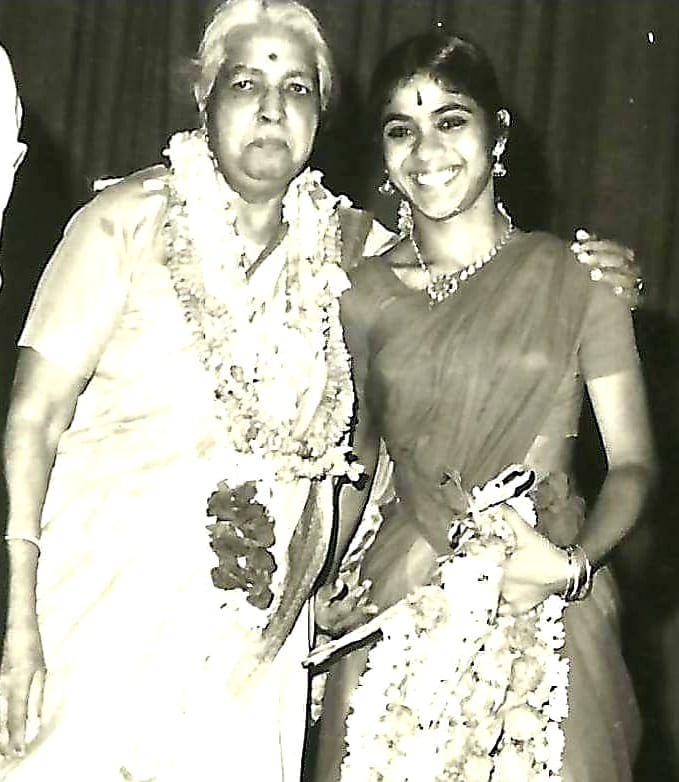 With Guru Rukmini Arundale
With Guru Rukmini Arundale
Not everyone today has the clarity which you had when you were young. What gave you, your parents and your gurus courage to pursue dance full time while you were doing very well in academics?
I was introduced to dance at the age of four thanks to my mother. She wanted me to be a dancer as she thought she saw a spark in me like all mothers. A trip to Kalakshetra in the summer holidays, meeting Rukmini Arundale, changed everything. When I returned and requested my dad, he asked me what about your education. In retrospect, my parents were either rather naive or brave. They sent a high performing 11 year old in school to Kalakshetra where there was no guarantee of full time education while dancing. Also remember we were a middle class family, three daughters, I the eldest. So I think, maybe they were not too bound by present day notions of education.

Would you make the same decisions now for other children?
It was 1973, my parents were brave. Sometimes when young students tell me they want to give up school and do art, I tell them they have to have something to fall back on. In Kalakshetra there were many school dropouts, but I told my parents I would get my education, albeit an informal one. Because of a lack of a good ROI in a dance form, you have to cross subsidise your art with something else, and education is good for that in a middle class family. The arts involve long haul training, you can’t do it like a four year engineering course. It is a long haul, and it is supported by a social system which has its ups and downs. One can double it with teaching which is a great business model. It should support your art at least in the early days. While it is not necessary that you monetise your art, it would be needed to train yourself till the material world supports your art.
A counter to this in the music world, it is believed that those who don’t take the decision to pursue only music don’t progress as well because they have to manage time and their professional life. How do you do both?
This is a social idea. When they say you’re not a full time dancer, I say what is that, no one dances 24/7. We are human beings with multiple capabilities. If you are driven that argument doesn’t stand. Time is always an issue but we as a generation have learned to manage time especially when things have been easier with technology. When I was young I would have my practice at 3.30 pm, when schools would close. Later when I started working it didn’t work, so I moved the rehearsals to 6 am. There was a lot of resistance. My students would say how can they get up so early. I said either sleep or beat the traffic and come. Then you can put it behind you the whole day and there’s no more stress for me.

In yourTED talk you mentioned being inspired by Devi and in a way becoming Devi and finding strength from that identity. When Devi is internalized, does it change the way you dance?
For and becoming is all very transitory and changes throughout the program. As artists we become the pathway, the channel for the narrative. We are storytellers. We take forward ideas from millennia ago and present them in a simple visual format. From childhood you are imbued with all these stories. When a young child comes to me, I tell everyone you must send the kid to an art form not to make them great but what you could not teach, your grandparents couldn’t teach, the art will teach them.
I cannot teach the song without telling the story, and so you are grounding the child in the roots he or she should have. In the past two generations the roots are coming out from the land. Indic academy is doing everything to push the roots down.
When I was going through health issues, the imagery of who the goddess is, beyond the image, you see a young woman who is imbued with that kind of extraordinary power. She has it in her to ride into the battlefield, as every god is a warrior, they have weapons. I would think to myself, if she can do it with those 18 arms, I saw those 18 arms around me in terms of family support etc. I saw her as guiding me, as my strength, my inspiration. She is riding not a chariot but a lion. I said I can also be that. It’s not that you become her but it is an attempt to embody the idea. With our Hindu philosophy we can rise from the manava state to the daivika state, the possibility is given to you.
In therapy it is common now like in CBT and MCBT you observe your thoughts and the thoughts are distanced as they bring you down. The mind is focused on the cancer, the treatment, the appearance, what people think, but you can observe that and manage it. While it gives us strength, our mind is one of our weaknesses when we are down.
The mind is a drunk monkey on a hot tin roof. You can get into a tizzy, but then pull it out and say shut up mind, and realise it is just a monkey. A lot of youngsters are moving into meditation which is all about watching your thoughts and realizing how it affects you. Help the mind play for you and not against you. Your passion helps you to train your mind. As a dancer or musician you have to be invested 100 per cent in the art, or you will make a mistake.
You’ve been awarded the Padma Sri and Prime Minister Modi ji mentioned you in Mann ki baat, what is it that draws attention to your stories?
Kutty kahani started during the pandemic. My team and I were doing a whole lot of online stuff because I had young students and they were really savvy. On the very first day of the lockdown we decided to do something for dancers. Everyone was panicking, their programmes had been canceled. I said let’s boost everyone’s mood. We put out a small piece of music and asked people to dance in gratitude for whoever they wanted. I got 350 videos in 48 hours. It went viral.
One by one, we did other things – motivational talks, cartoons put out by children and my students, rap videos, fun stuff. The Prime Minister had spoken about storytelling in Mann ki baat So I thought let’s get the children to tell Indic Hindu stories in any language, between ages of 6 and 13, through the prism of the child’s talent. I reached out to young parents and teachers I knew. People said no one will watch boring home videos, but I said let’s ramp it up. Let’s do digital design and animation. We got 55 episodes, we packaged it, edited it with a lot of back and forth with every child and parent on how to shoot.
Between November 2020 to December 31, we released one video every morning at 8 am. Across the globe people were appreciating it, children were humming it. It was multi-art, multi-languages (11). DD played the videos on prime time. We put it all together in one e-book, which took almost two years to self publish because video enabled e-books are difficult and Indic Academy was kind to support it. The e-book has videos and some did you know segments. For example if the child did Nitya Puja of Annamacharya, I added names of the Seven hills, how many steps are there in Tirumala, the laddus. Children could read, listen, see, learn, understand and appreciate the art. I am grateful it got the Prime Minister’s attention.
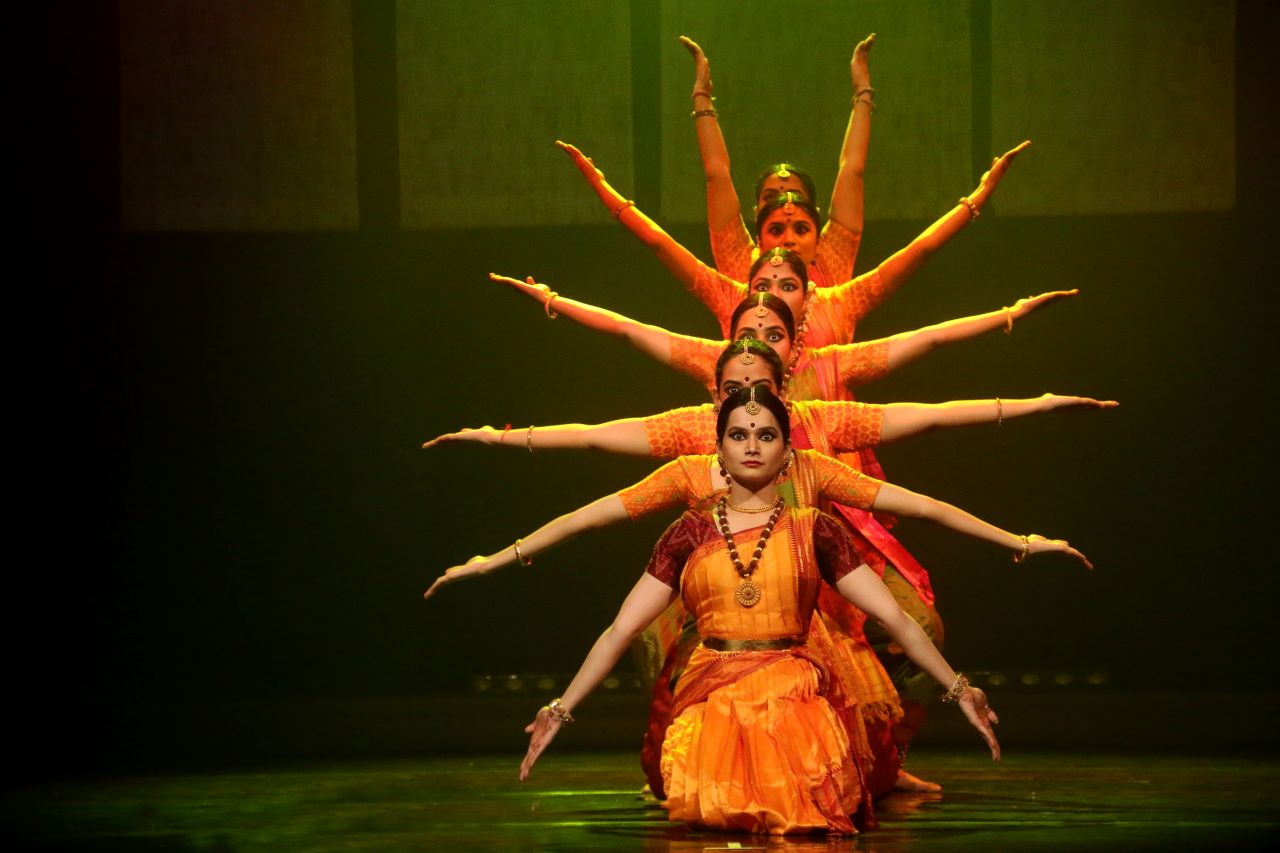
In art people are usually concerned only with their own performance, but pandemic slowed it down, brought people together.
We were holding hands across the internet, reaching out to people we might not have otherwise. After Kutti Kahani, I did another movement which was dance based. We brought 12 different gurus to come choreograph and teach so it became kind of a bonding. As you rightly said we’re all pretty self driven, doing our own thing, so this helped.
So this ties in with your guru Rukmini’s thoughts of dance and music not being for entertainment?
That has always been true of our Indian arts. At temples, there is the dance for the god, the performance inside the sanctum sanctorum is an offering. This whole concept of art only being entertainment is a modern idea and has diminished the art.
In India we have 64 art forms, not just dance and music. At Kalakshetra we learned to draw kolams. I still have the books on drawing kolams. It is coming back, but again we need to do more of it. The silos of education and art have to break, they have to meet. In early education it’s easy to teach fractal math and counting through tabla and jati.
I say that arts should be integrated with education from an early age. Education should not be offered in the strict compartments of the different streams. We should also not lose sight of our Indic traditions; because I feel that somewhere along the way, we are losing our inherent strengths. Today, we have extraordinary minds, but when it comes to social skills, there is a lacuna. Arts or humanities, in general, contribute greatly in creating holistic human beings.



